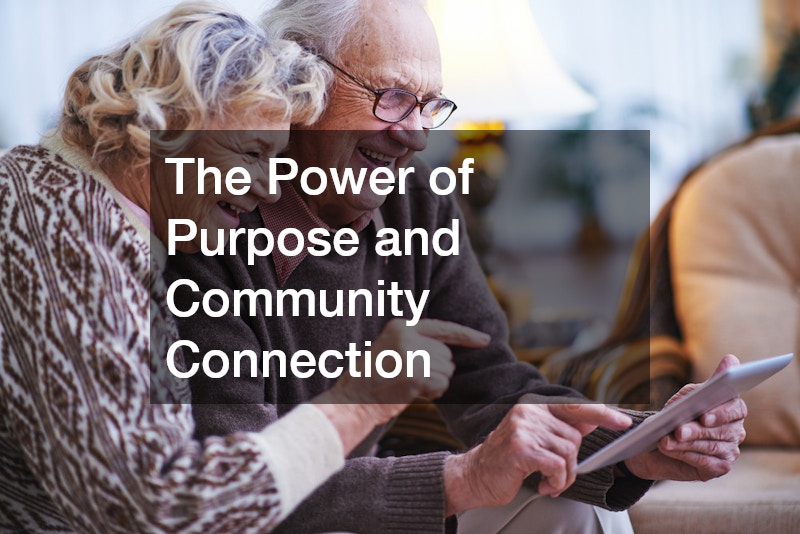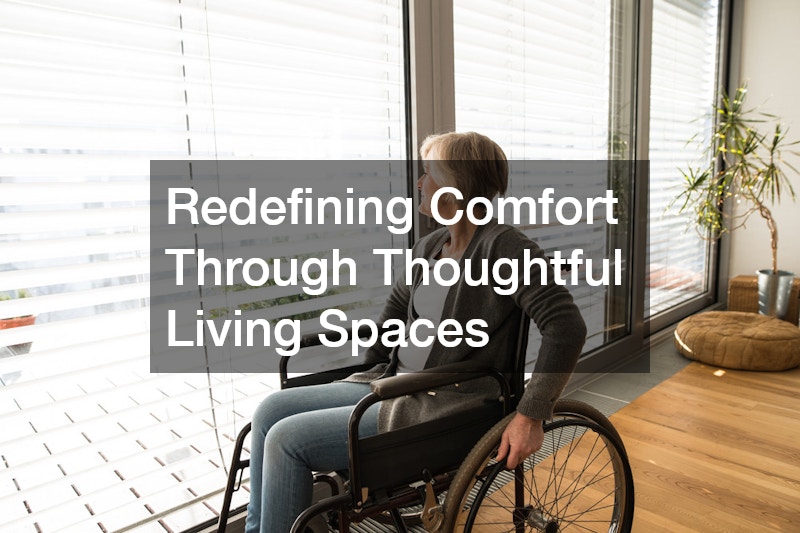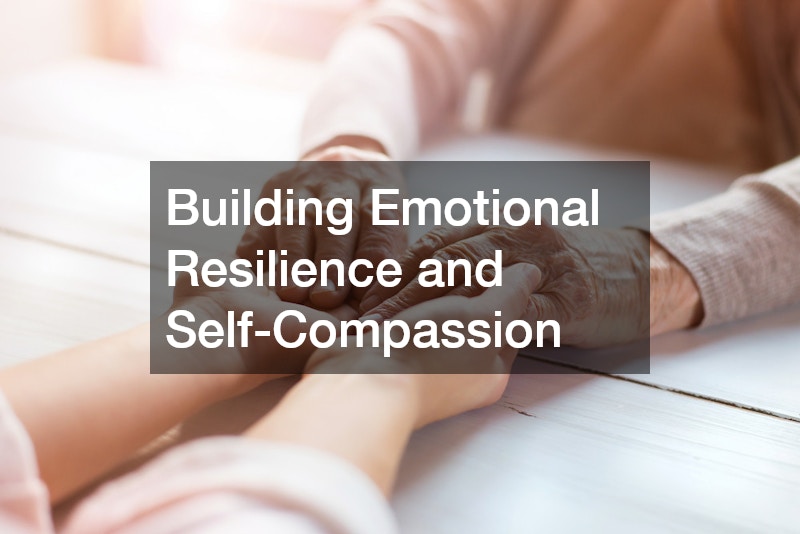Aging is a natural and beautiful part of life’s journey. It brings wisdom, perspective, and the opportunity to live with greater intention. However, embracing the aging process requires more than just accepting the changes in our bodies and minds—it’s about cultivating wellness, nurturing joy, and creating environments that support vitality at every stage. By prioritizing self-care, emotional fulfillment, and holistic living, anyone can learn how to embrace aging with grace and positivity.
This comprehensive guide explores the physical, emotional, and lifestyle shifts that help individuals live fully as they grow older. From redesigning living spaces to supporting body function through modern health practices, every element plays a role in maintaining wellness and joy. When you embrace aging as an opportunity to redefine what it means to thrive, you gain a renewed sense of freedom and empowerment.
Cultivating Mindfulness and Mental Resilience
As we age, one of the most powerful tools for maintaining wellness is mindfulness. Embracing the present moment can help reduce anxiety, boost memory, and promote overall happiness. Learning to embrace aging begins with developing an awareness of how thoughts and habits shape emotional health. Mindfulness encourages individuals to slow down, appreciate small joys, and maintain clarity even when facing life’s challenges.
Daily practices such as meditation, journaling, or deep breathing help strengthen mental resilience. Studies have shown that consistent mindfulness practices can improve brain function and emotional regulation. The goal isn’t perfection but presence—being kind to oneself during moments of physical or emotional discomfort. When people learn to quiet the noise of daily stressors, they make space for gratitude and fulfillment.
Social engagement also plays an essential role in mental well-being. Staying connected with friends, joining interest-based groups, or volunteering fosters a sense of belonging. It’s easy to isolate as we age, but connection reminds us that growth never stops. A health and wellness coach can also help guide these lifestyle adjustments, providing personalized strategies to enhance mental balance and long-term vitality. The combination of mindfulness, mental resilience, and connection creates a foundation for a joyful, purposeful life—one that allows individuals to embrace aging as a continued adventure, not a decline.
Redefining Comfort Through Thoughtful Living Spaces
Physical surroundings have a powerful effect on how we feel each day. Aging gracefully often involves creating living spaces that promote comfort, safety, and aesthetic satisfaction. architecture and design firms now specialize in inclusive environments that adapt to evolving physical needs without sacrificing style. The modern approach to aging-in-place emphasizes both beauty and practicality.
Simple adjustments like wider doorways, slip-resistant flooring, and improved lighting can make a tremendous difference in daily life. Features such as shower enclosures with easy entry, grab bars, and built-in seating add comfort and safety to bathrooms while maintaining modern appeal. A bedroom closet with accessible shelving and soft lighting supports independence while reducing physical strain.
These environmental updates encourage individuals to embrace aging through intentional design—seeing their home as a living reflection of who they are and what they value. Small aesthetic details such as calming colors, natural light, and open layouts create a sense of serenity. When your environment supports your needs and reflects your personality, every day becomes easier to navigate and more enjoyable to experience.
Working with professionals who understand adaptive design ensures that spaces remain functional long-term. By focusing on the balance between comfort and beauty, homeowners reinforce the idea that aging gracefully doesn’t mean giving up luxury or independence—it means redefining it.
Nurturing Physical Strength and Mobility
Physical activity is crucial to maintaining independence and confidence as we grow older. Strength, balance, and flexibility directly impact how well we move and feel. Regular exercise not only preserves mobility but also releases endorphins that elevate mood and support overall well-being.
To truly embrace aging, it’s important to develop a fitness routine that suits one’s abilities and preferences. Activities like walking, swimming, yoga, or cycling can enhance endurance and joint health without excessive strain. Those recovering from injuries or chronic discomfort might find tailored options pain treatment clinic, where therapies focus on improving movement and reducing inflammation through non-invasive methods.
Mobility also depends on accessibility within one’s home environment. Chair lift installation services are increasingly common for multi-level homes, offering a seamless way to maintain freedom of movement without the risk of falls. Whether living alone or with family, maintaining autonomy is key to aging confidently. A holistic fitness approach doesn’t require intense workouts—it simply demands consistency and joy. Dancing in the living room, gardening, or taking a gentle evening stroll can make all the difference. The more movement becomes a lifestyle instead of a chore, the more likely one is to embrace aging with energy and optimism.
Supporting Wellness Through Balanced Nutrition
Nutrition plays a central role in aging well. A balanced diet rich in antioxidants, protein, and hydration supports muscle maintenance, cognitive health, and skin vitality. Proper nutrition also helps prevent chronic diseases and supports immune resilience.
Hydration is one of the most overlooked aspects of health. Using a water softener system at home can make a subtle but meaningful difference by improving water quality, helping skin stay hydrated, and reducing mineral buildup in appliances and pipes. Clean, balanced water supports digestive health and contributes to overall vitality. To embrace aging fully, it’s vital to focus on nourishment that energizes rather than depletes. Whole foods—like fruits, vegetables, lean proteins, and healthy fats—should be prioritized over processed options. Cooking at home allows individuals to maintain control over ingredients and portion sizes.
Consulting with a local functional medicine provider can uncover hidden nutritional deficiencies or metabolic imbalances that may impact energy levels. Functional medicine emphasizes root-cause solutions rather than symptom management, empowering individuals to understand their body’s specific needs. By treating food as medicine and hydration as self-care, individuals can sustain the energy and clarity necessary to lead an active, vibrant lifestyle. Each mindful choice becomes a celebration of the body’s ability to adapt and thrive, helping one embrace aging through nourishment and self-respect.
Finding Joy in Movement and Outdoor Connection
Movement doesn’t only mean exercise—it also represents connection, exploration, and the joy of freedom. Spending time outdoors has profound mental and physical benefits, from improving cardiovascular health to elevating mood. Whether it’s walking a dog, tending to a garden, or exploring scenic trails, nature offers a therapeutic escape from daily stress.
Recreational activities can also enhance social engagement. Playing golf, for example, combines gentle physical activity with camaraderie and relaxation. Using a golf cart makes the sport accessible to all ages and abilities, allowing participants to enjoy the game without overexertion. These kinds of modifications allow individuals to embrace aging while maintaining active lifestyles and community involvement.
Beyond structured activities, simple outdoor habits—like morning stretches on a porch or evening walks—create consistency. Sunlight exposure helps regulate sleep patterns and improves vitamin D levels, essential for bone and immune health. Nature also has a grounding effect, reminding us to slow down and appreciate our surroundings.
Integrating outdoor experiences into everyday life can renew enthusiasm for living. The fresh air, social connection, and sense of play all contribute to physical and emotional balance. With each outdoor moment, individuals discover that to embrace aging is to stay curious, adventurous, and connected to the world around them.
Building Emotional Resilience and Self-Compassion
Emotional well-being is as critical to aging gracefully as physical health. Life brings inevitable changes—children grow, careers evolve, loved ones may pass—but through resilience and self-compassion, individuals can find peace and purpose amid transformation.
To embrace aging emotionally, one must let go of unrealistic comparisons and celebrate personal evolution. Accepting one’s story, including its imperfections, fosters deeper gratitude and perspective. Practices such as therapy, gratitude journaling, or working with a health and wellness coach can help identify unhelpful thought patterns and replace them with affirmations of self-worth.
Emotional resilience also grows through nurturing relationships. Maintaining meaningful bonds with friends and family protects against loneliness and cognitive decline. Even small acts of kindness, like checking in on neighbors or joining community classes, reinforce belonging.
Creating an environment that supports mental serenity also matters. Incorporating calming elements into the home—such as soft textures, natural light, and personal art—can reduce stress and promote relaxation. When your living space reflects your inner peace, it becomes easier to sustain emotional balance. The act of embracing aging is, in many ways, a practice of emotional generosity—toward oneself and others. It’s about living with openness, forgiveness, and continued curiosity for life’s unfolding journey.
Adapting Your Home and Lifestyle for Safety and Ease
Physical comfort and accessibility are vital for maintaining independence. Aging gracefully often involves proactive adaptation—making lifestyle and home improvements that promote both safety and enjoyment.
Partnering home developer familiar with adaptive living solutions can help ensure that residences remain both beautiful and functional as needs evolve. Modern designs now integrate accessibility features seamlessly into home aesthetics, offering the best of both worlds.
Aging-in-place modifications can include practical features like walk-in tubs, non-slip flooring, and strategically placed lighting. As previously mentioned, chair lift installation enhances safety in multi-level homes, while ergonomic kitchen layouts reduce strain during cooking. These modifications aren’t just about necessity—they’re about empowerment.
Bathrooms are another focus area. Installing modern shower enclosures with adjustable nozzles and seating options promotes independence while adding spa-like comfort. Meanwhile, bedrooms can be designed with accessibility in mind by incorporating a thoughtfully arranged bedroom closet that allows easy reach of everyday items.
By viewing these changes not as limitations but as enhancements, individuals begin to embrace aging with pride. Every improvement represents an investment in freedom, confidence, and peace of mind. Homes should evolve with their owners—adapting not out of fear, but out of foresight and care.

The Power of Purpose and Community Connection
Aging is not simply about maintaining health—it’s about sustaining purpose. When people engage in activities that provide meaning, they feel more fulfilled and connected. Purpose fuels motivation, sharpens the mind, and strengthens social ties.
Finding purpose can take many forms. Some may volunteer, mentor younger generations, or join creative workshops. Others may embrace hobbies that reignite passions left behind during busier years. Pursuing joy and meaning helps individuals embrace aging with enthusiasm, not hesitation.
Communities that encourage inclusion and activity also play a significant role. From wellness programs at recreation centers to holistic care from a local functional medicine provider, these networks support physical and emotional vitality. Seniors who stay engaged with others often experience lower stress levels, better cognitive function, and improved overall well-being.
Mobility options, such as using a golf cart in larger neighborhoods or retirement communities, also encourage social interaction and ease of movement. These small conveniences enhance freedom and connection, proving that independence doesn’t have to fade with time.
In essence, embracing purpose is about recognizing that life continues to offer endless growth opportunities. The more one engages, learns, and contributes, the more deeply one can embrace aging as a stage of joy, wisdom, and community belonging.
Integrating Holistic Practices for Lifelong Wellness
True wellness extends beyond diet and exercise—it encompasses the mind, body, and spirit. Integrative approaches such as acupuncture, massage therapy, and personalized fitness plans can be combined with guidance from professionals at a pain treatment clinic or health and wellness coach. These experts help create individualized routines that balance modern medicine with natural healing methods.
Holistic wellness emphasizes prevention over reaction. From installing a water softener system to reduce skin irritation to consulting with architecture and design firms that create calming environments, each decision contributes to a better quality of life. These elements work together to reduce stress and improve comfort—both essential to longevity.
To embrace aging in its truest form is to treat every moment as an opportunity for renewal. Whether it’s practicing meditation, stretching each morning, or connecting with loved ones, consistency builds vitality. Modern science supports what many cultures have long known: emotional well-being and physical health are deeply interconnected.
Ultimately, wellness isn’t a single goal but a lifelong commitment. By aligning lifestyle, surroundings, and mindset with personal values, individuals create the conditions for lasting happiness and vitality. When wellness becomes a way of life, aging becomes not something to resist, but something to celebrate.
Choosing Joy as a Way of Life
To embrace aging is to live fully in the present while preparing for the future with intention. Aging doesn’t mark the end of youth—it marks the beginning of authenticity. Through mindfulness, nutrition, supportive environments, and meaningful relationships, one can transform the process into a celebration of life’s continued unfolding.
Wellness and joy go hand in hand. Every choice—from consulting with a health and wellness coach to upgrading your bedroom closet or partnering with innovative architecture and design firms—reflects the value placed on comfort, vitality, and happiness. These decisions help shape a lifestyle that honors both body and spirit.
When people learn to embrace aging, they discover that life doesn’t narrow—it expands. It becomes a canvas for creativity, gratitude, and personal evolution. The years ahead are filled with potential for laughter, love, and discovery. Aging is not about limitation; it’s about liberation—the freedom to live exactly as you wish, surrounded by the people, environments, and experiences that make you feel most alive.





